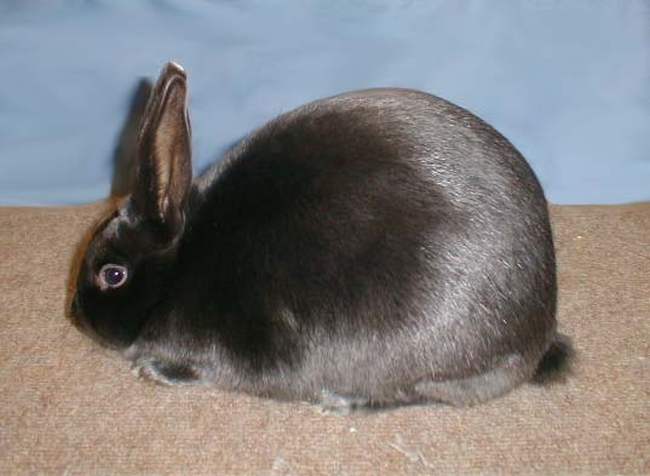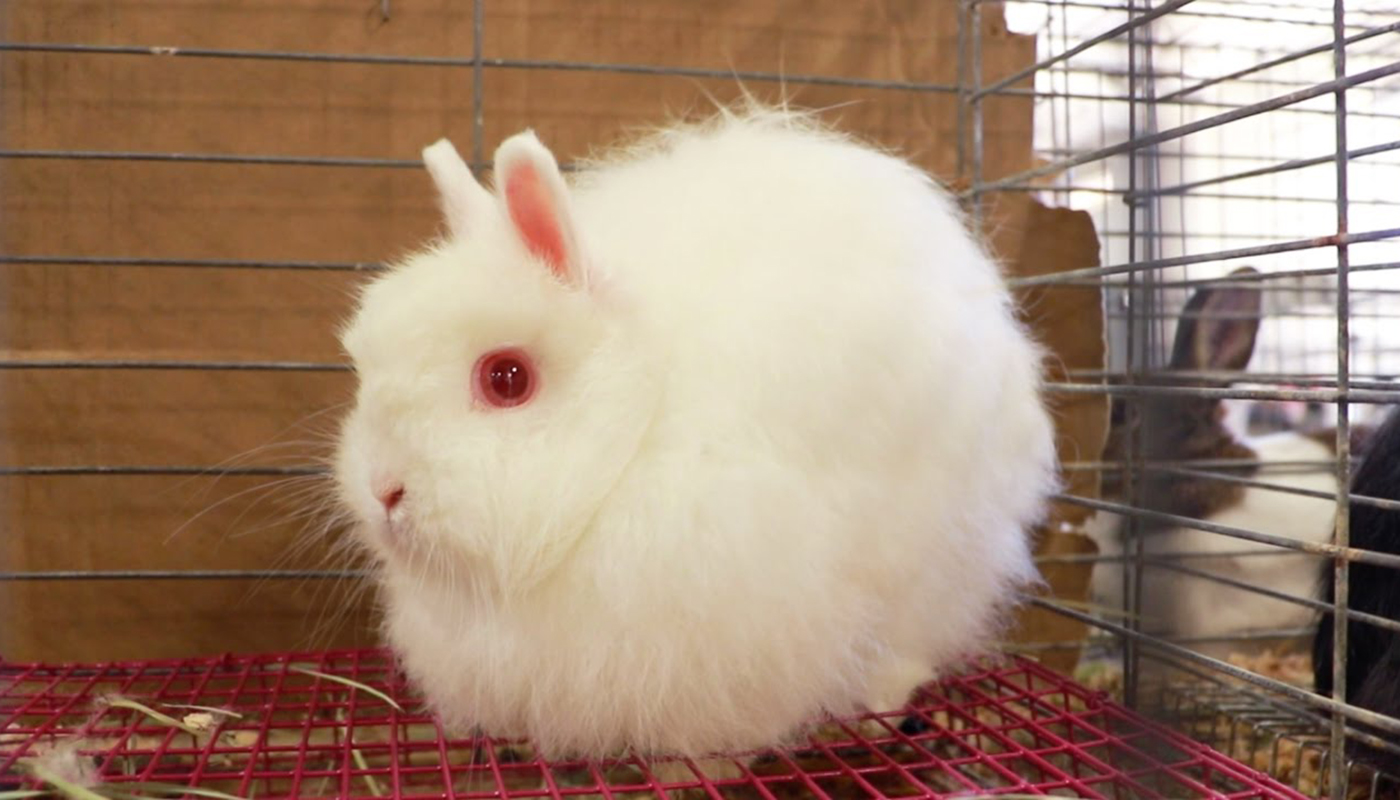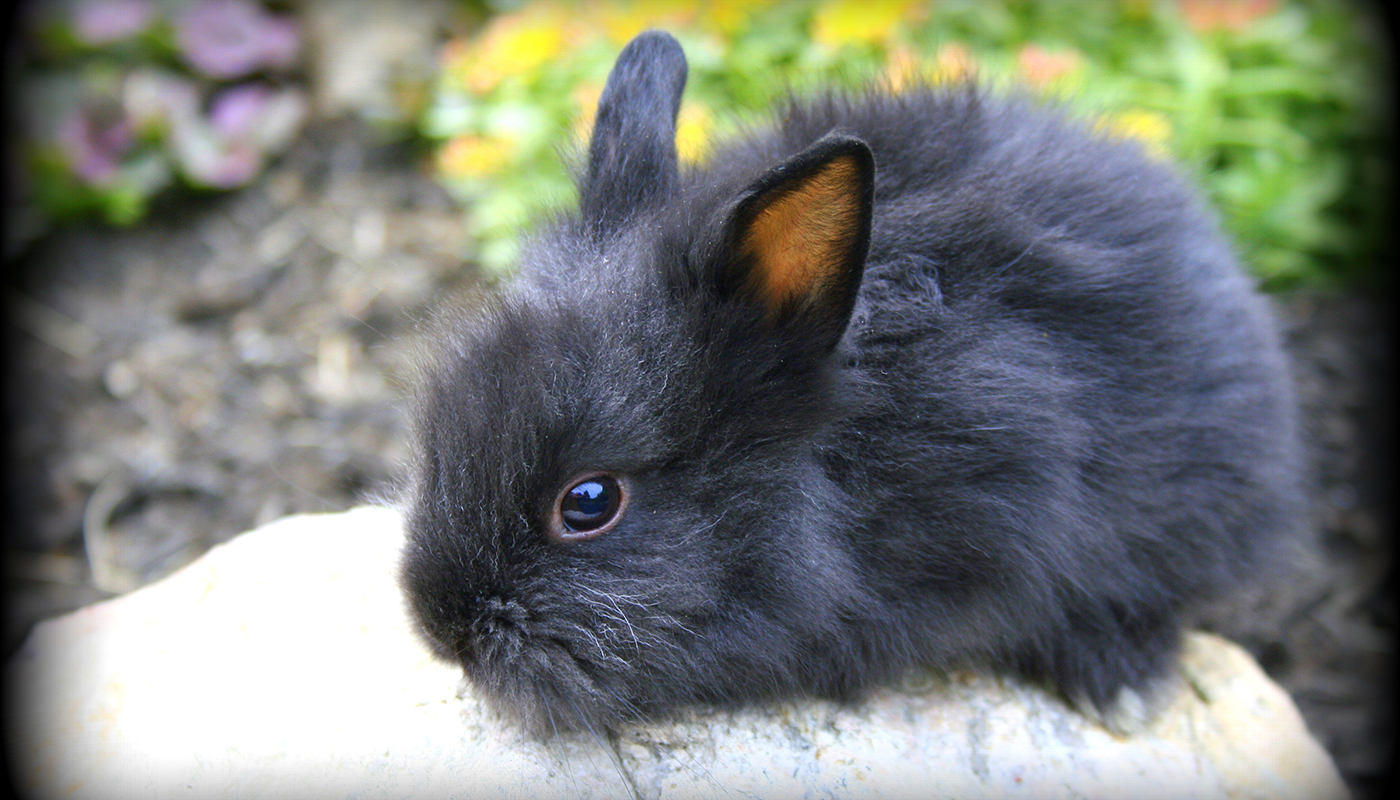
The Satin rabbit breed is a medium to large breed that despite its size is quite a popular breed in the United States of America. It is sought after as a companion or pet rabbit breed as well as an exhibition rabbit breed. They tend to show off very well at various rabbit shows and the breed comes in a variety of elven different standard accepted colors.
BREED PROFILE OVERVIEW
|
|
|---|---|
| Breed Name: | Satin |
| Other Names: | None |
| Country of Origin: | United States of America/td> |
| Breed Purpose: | Fur, exhibition, and pets |
| Breed Size: | Medium to large |
| Breed Weight: |
Female/Doe: 8 to 11 lbs. Male/Buck: 8 to 11 lbs. |
| Breed Color(s): | Black, Broken, Blue, Chocolate, Californian, Copper, Otter, Red, White, and Siamese |
| Physical Appearance: |
The Satin rabbit breed has a commercial body shape which is compact and well rounded with powerful smooth hindquarters.
They have a wedge-shaped head with long erect ears that touch at the base of the head and small reddish-brown eyes. Their coat is short, silky, quite thick with rollback type fur that has a satin sheen to it that is quite unique to this rabbit breed. They have a complex coat structure with a recessive gene that causes the satin sheen. However, this does not mean that their coat requires any special attention other than the usual grooming rituals. |
| Temperament: | Calm, gentle, docile and quite well mannered. They are also good with children |
BREED CHARACTERISTICS
- They have a decent sized litter and the females make very good mothers. Most rabbits have good maternal instincts and some breeds can be a bit testy and protective when they have young. They can also be uncharacteristically moody during mating season.
- Their young open their eyes around 7 to 14 days with an average of 10 days after birth. When their eyes have opened, they can start to be introduced to food such as alfa pellets and water.
- Even when the young start to eat it does not mean they are quite ready to be weaned from their mothers. The mothers will know when it is time to wean her young. It is important for the baby rabbit’s health, growth, immune system and development of a proper digestive system that they do not be removed from their mother for at least 8 weeks. They usually require her milk for a minimum of 8 weeks after birth.
- Their average lifespan is 5 to 8 years although there have been some breeds that have lived to 10 years with the proper care.
| Good Pets? | They are very good pets for singles, seniors, families with children, novices and can be both an outdoor or indoor pet rabbit. |
| Child Friendly? | Children should be supervised around animals and properly taught how to look after them and handle them. Rabbits can bite and scratch |
| Ideal Climate: | All climates – rabbits should never be left outside without proper shelter and housing that must be raised off the ground and predator safe. |
| Conservation Status: | Not Listed by the *ALC Status/Rarity: They are not listed by the American Livestock Conservancy |
| Recognized by the ARBA? | Yes, the American Rabbit Breeders Association recognizes eleven color varieties of the Satin Rabbit Breed. |
| Rabbit Associations/Clubs: | American Satin Rabbit Breeders Association |
| Where to buy them? | For an up to date list of registered breeders please contact the American Satin Rabbit Breeders Association. The USA Rabbit Breeders Directory is a useful resource to find breeders, clubs, and information about the breed. |
| Note: *ALC stands for American Livestock Conservancy | |
GENERAL INFORMATION
For a slicker more glossy or shiny pelt, it is advisable to groom them every two to three weeks. During the molting season, it is advisable to groom rabbits every week to remove stray hairs.
Rabbits can be quite lively and energetic and need quite a bit of exercise and stimulation. It is a good idea to have a nice safe and secure run for them to play in and stretch their legs.
Toys, tubes and various obstacle courses for them is a good way to help them expend some of their energy and they are really fun to watch at play.
They are also sociable animals that do like to have a friend or two to play with.
Regular health and critter check once a week or every second week should become a habit. This will help to keep your rabbit(s) in excellent condition and health. Grooming does not require a lot if their coats are low maintenance. But it is a good idea to give them a nice gentle brushing to help remove any excess hairs regardless of the length of their coats.
It is also a good idea to check on the state of their teeth to ensure that they are not too long and causing the rabbit any discomfort.
Rabbits teeth never stop growing and getting fresh hay on a regular basis helps to control the growth of their teeth.
Rabbits need a good diet of quality pellets that are filled with their daily nutritional requirements. They do love dandelions, cabbage and various fruits as a nice tasty treat.
Rabbits that have quite a short coat are not really at risk for most of the digestive problems long fur seem to cause rabbits. They can still get other ailments such as flystrike, ear mites or overgrown teeth. These can all be controlled/maintained or avoided altogether with the proper health and grooming care of the rabbit(s).
If you have two rabbits and do not want to breed them it is possible to spay female rabbits and neuter male rabbits.
The females can be spayed as young as four months old, but vets prefer to wait until they are at least six months old before doing so.
The young males can be neutered as young as found months old.
Rabbits, just like any other pet, should be dewormed on a regular basis. Check with your local vet for proper guidance on the administering of worm medication to your animals.
HISTORY
The satin gene is the gene in this rabbit breed that gives this rabbit and the Mini Satin rabbit breed their unique satin sheen coat.
A Mr. Walter Huey who had a rabbitry in Indiana found the first rabbits with this gene in a litter of Havana rabbits. Mr. Huey had wanted to improve his Havana breed and had started to selectively inbreed them which caused a new mutation in these rabbits’ offspring.
Mr. Huey decided to show these rabbits and they were put against the regular Havana’s, but the other breeders were not happy as they thought it was unfair to show these rabbits with the satin coats against the regular Havana rabbit breed.
The American Federation of Havana Breeders thought it would be a good idea to sponsor the new “Satin Havana’s”. With some dedication and effort, the Satins were developed, and the breed was further developed until it was accepted into the American Rabbit Breeders Association in 1956,
USEFUL LINKS
- American Rabbit Breeders Association
- Fur Commission USA
- North American Meat Institute
- American Livestock Conservancy
- Animal Shelter (ASPCA)
- American Veterinary Medical Association
- American Animal Welfare Society
- American Animal Control
- American Society of Animal Science
- United States Department of Agriculture
- United States Department of Agriculture – Rabbit Meat
 Giant Angora Rabbit – Everything You Need to Know
Giant Angora Rabbit – Everything You Need to Know Meet the Giant Polish Rabbit: A Marvel of Size and Polish Charm
Meet the Giant Polish Rabbit: A Marvel of Size and Polish Charm 10 Best Meat Rabbit Breeds
10 Best Meat Rabbit Breeds Florida White Rabbit – Everything You Need to Know
Florida White Rabbit – Everything You Need to Know Discover the Charming Lion Dutch: A Hybrid Rabbit Combining Lionhead x Dutch
Discover the Charming Lion Dutch: A Hybrid Rabbit Combining Lionhead x Dutch Jersey Wooly Rabbit – Everything You Need to Know
Jersey Wooly Rabbit – Everything You Need to Know Holland Rex Rabbit: A Perfect Blend of Holland Lop and Rex Breed
Holland Rex Rabbit: A Perfect Blend of Holland Lop and Rex Breed Silver Fox-Satin Rabbits: A Unique Crossbreed
Silver Fox-Satin Rabbits: A Unique Crossbreed Flemish Giant Rabbit – Everything You Need to Know
Flemish Giant Rabbit – Everything You Need to Know Discover the Top 15 Most Popular Rabbit Breeds for Your Perfect Furry Companion
Discover the Top 15 Most Popular Rabbit Breeds for Your Perfect Furry Companion Lionhead Rabbit – Everything You Need to Know
Lionhead Rabbit – Everything You Need to Know Crème D’Argent Rabbit – Everything You Need to Know
Crème D’Argent Rabbit – Everything You Need to Know